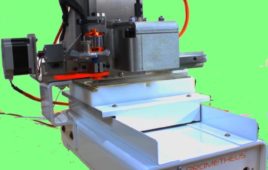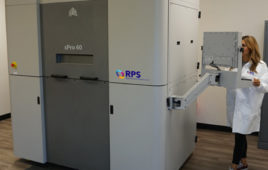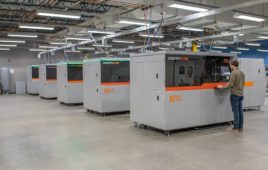Bottles, packaging, furniture, car parts… all made of plastic. Today we find it difficult to imagine our lives without this key material that revolutionized technology over the last century. There is wide-spread optimism in the scientific community that graphene will provide similar paradigm shifting advances in the decades to come. Mobile phones that fold, transparent and flexible solar panels, extra thin computers… the list of potential applications is endless. Scientists, industries and the European Commission are so convinced of the potential of graphene to revolutionize the world economy that they promise an injection of €1.000 million in graphene research.
The most recent discovery published in Nature Physics and made by researchers at the Institute of Photonic Science (ICFO), in collaboration with Massachusetts Institute of Technology, USA, Max Planck Institute for Polymer Research, Germany, and Graphenea S.L. Donostia-San Sebastian, Spain, demonstrate that graphene is able to convert a single photon that it absorbs into multiple electrons that could drive electric current (excited electrons) – a very promising discovery that makes graphene an important alternative material for light detection and harvesting technologies, now based on conventional semiconductors like silicon.
“In most materials, one absorbed photon generates one electron, but in the case of graphene, we have seen that one absorbed photon is able to produce many excited electrons, and therefore generate larger electrical signals” explains Frank Koppens, group leader at ICFO. This feature makes graphene an ideal building block for any device that relies on converting light into electricity. In particular, it enables efficient light detectors and potentially also solar cells that can harvest light energy from the full solar spectrum with lower loss.
The experiment consisted in sending a known number of photons with different energies (different colors) onto a monolayer of graphene. “We have seen that high energy photons (e.g. violet) are converted into a larger number of excited electrons than low energy photons (e.g. infrared). The observed relation between the photon energy and the number of generated excited electrons shows that graphene converts light into electricity with very high efficiency. Even though it was already speculated that graphene holds potential for light-to-electricity conversion, it now turns out that it is even more suitable than expected!” explains Tielrooij, researcher at ICFO.
Although there are some issues for direct applications, such as graphene’s low absorption, graphene holds the potential to cause radical changes in many technologies that are currently based on conventional semiconductors. “It was known that graphene is able to absorb a very large spectrum of light colors. However now we know that once the material has absorbed light, the energy conversion efficiency is very high. Our next challenge will be to find ways of extracting the electrical current and enhance the absorption of graphene. Then we will be able to design graphene devices that detect light more efficiently and could potentially even lead to more efficient solar cells.” concludes Koppens.
For more information visit www.icfo.es.
Filed Under: Rapid prototyping




